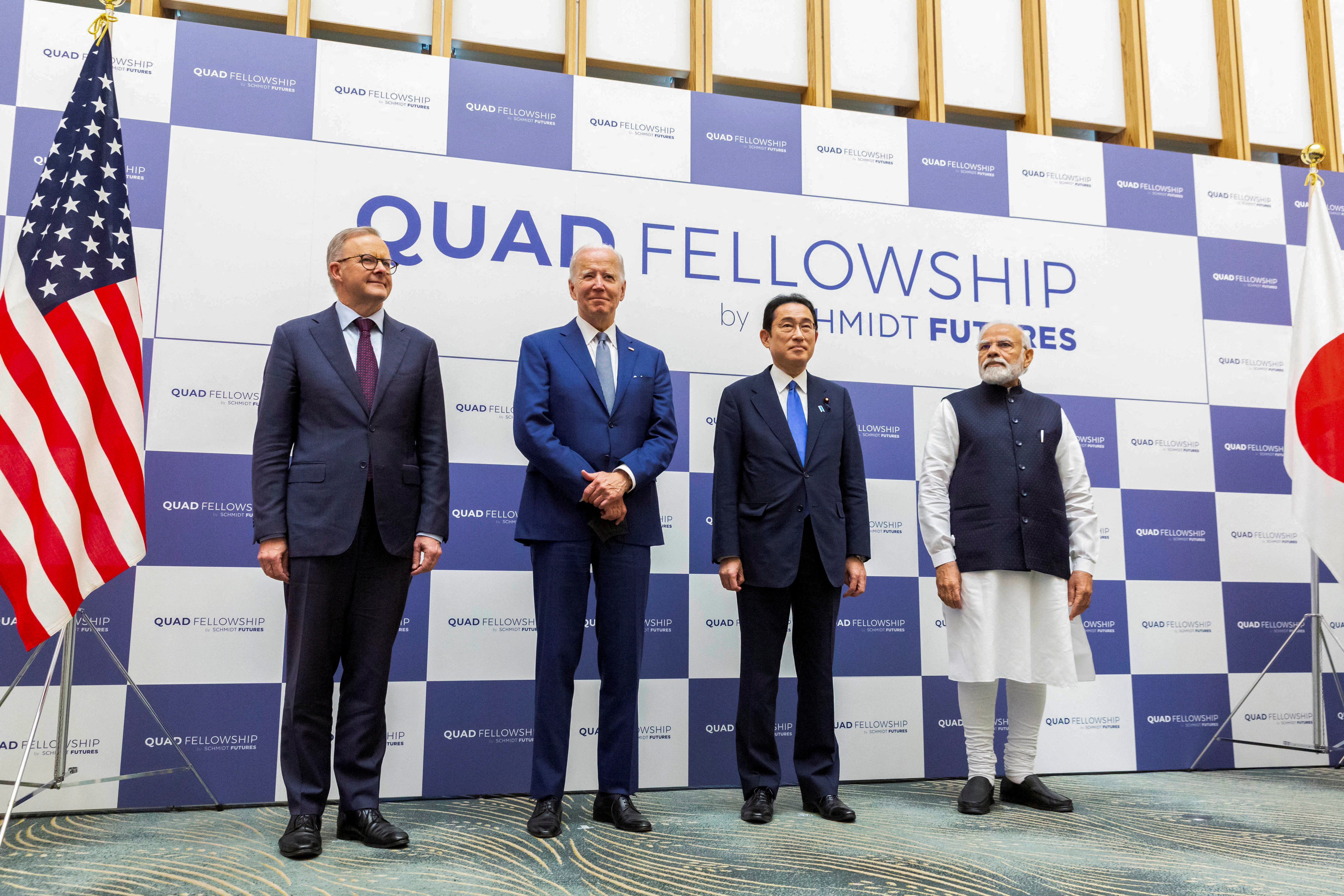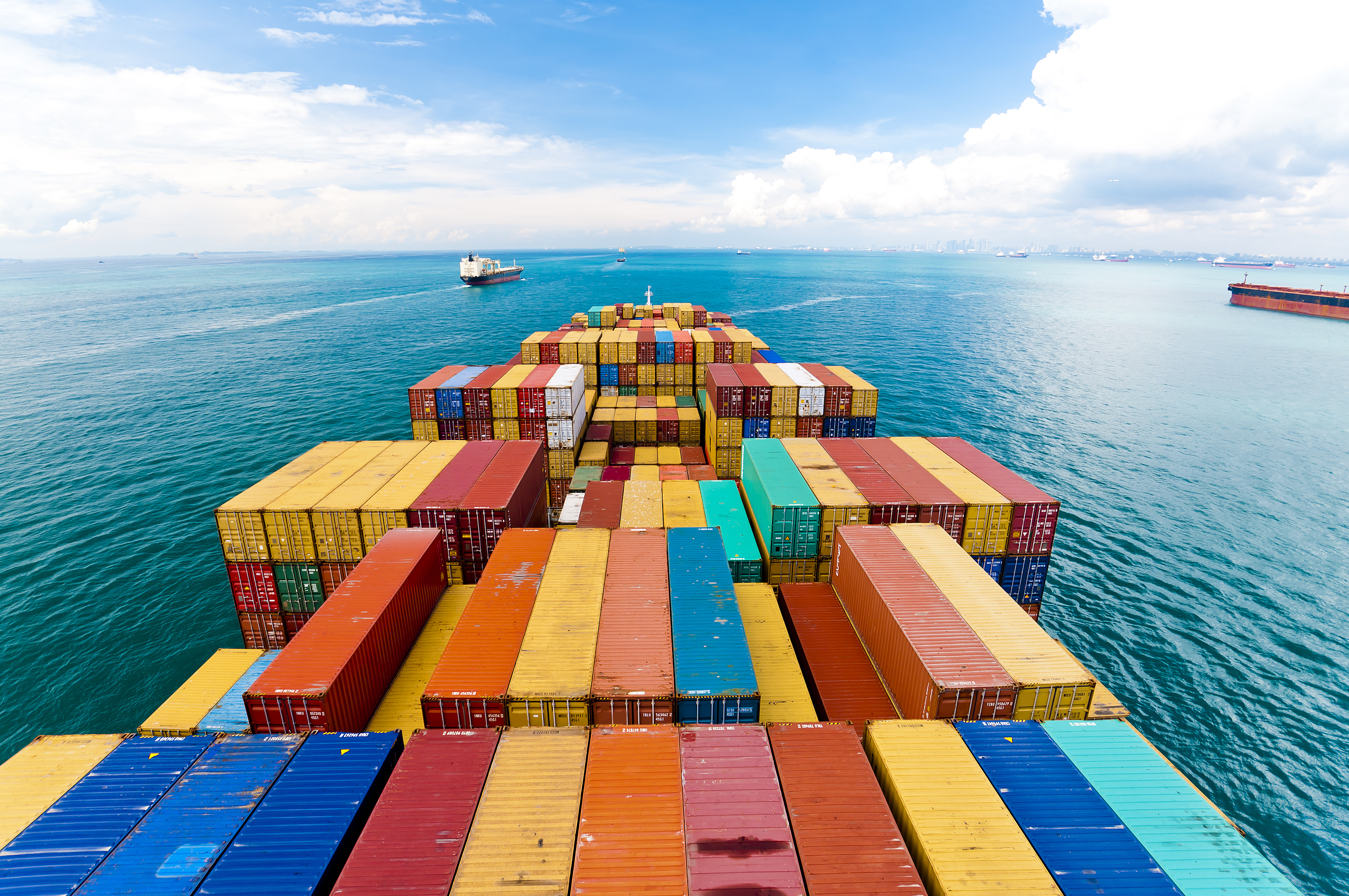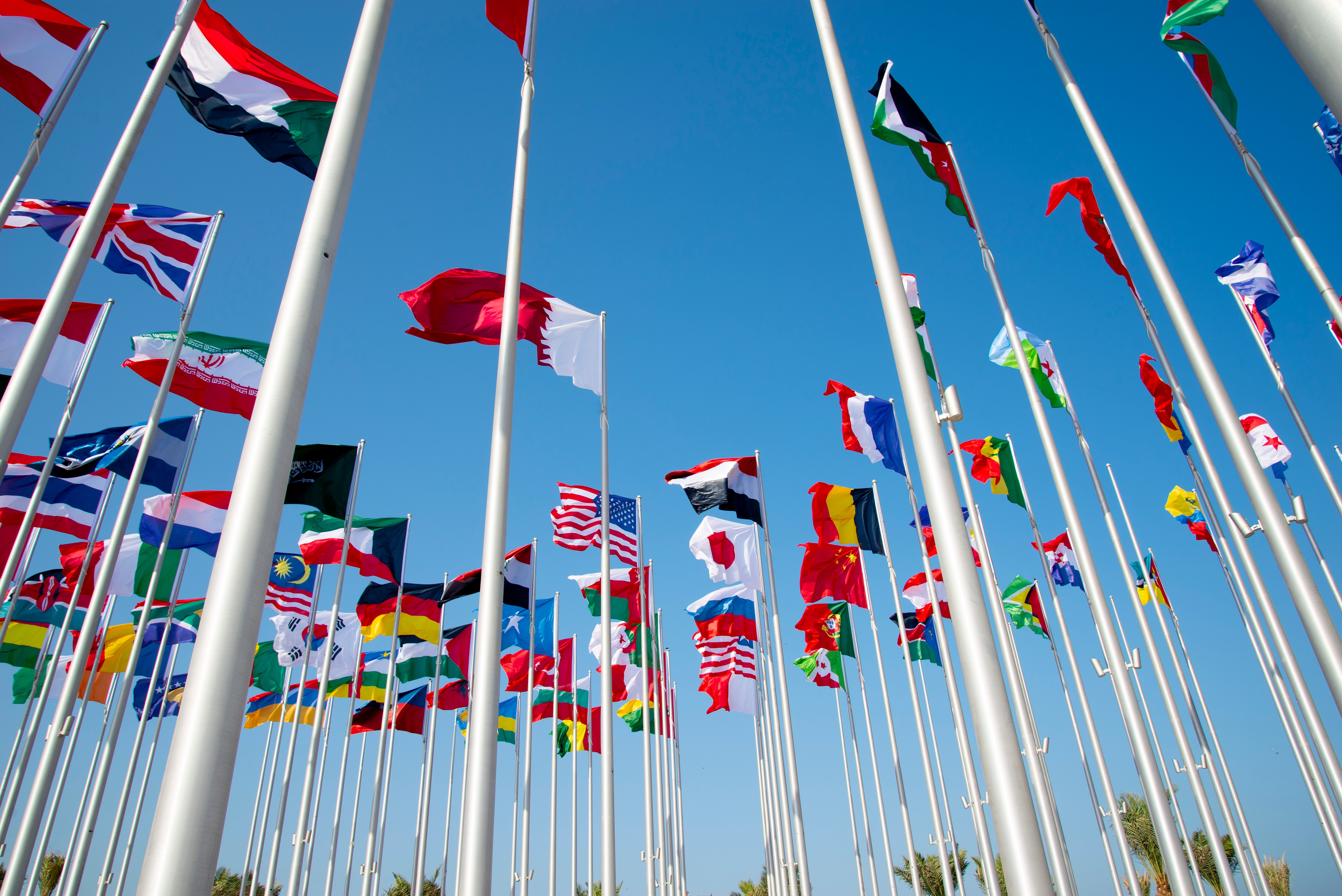
Updating America’s Asia strategy
China’s rapid growth in economic power, military strength, and diplomatic influence has sparked concerns in Washington and elsewhere about whether China is on a trajectory to become the dominant power in Asia, displacing the United States from its post-World War II leadership role in the region. This has generated worry about whether a more Sino-centric Asia would generate illiberal tailwinds in the international system. It also has led to misgivings about whether a more dominant China would seek to curtail American access to Asia, the engine of the global economy in the coming century, thereby diminishing America’s long-term competitiveness.
In the face of these risks, the United States and its partners have been advancing a concerted strategy to build a more densely integrated web of relationships in the region. Through a combination of partnerships, alliances, issue-specific groupings, and formalized structures, countries in the region have begun cohering to hedge against risks from China.
Even so, China continues to grow its military, strengthen its central position in the regional economy, and make diplomatic inroads across the region. Meanwhile, there is a latent perception in parts of Asia that the United States is failing to meet the moment. This assessment is most pronounced on trade issues, where the United States finds itself on the outside of the region’s two main trade agreements, the Regional Comprehensive Economic Partnership (RCEP) and the Comprehensive and Progressive Agreement for Trans-Pacific Partnership (CPTPP).
To evaluate the merits of these anxieties and identify potential policy remedies, Ryan Hass, Bruce Jones, and Mireya Solís convened 10 Brookings scholars for a written dialogue on steps the United States could take to strengthen its overall strategy in Asia. These experts, drawn from a range of disciplines, were asked to offer recommendations on regional economic strategy, diplomatic strategy, and security strategy.
The following are a few key takeaways from the exchanges that included David Dollar, Patricia Kim, Tanvi Madan, Joshua P. Meltzer, Chris Meserole, Michael E. O’Hanlon, Eswar Prasad, Melanie W. Sisson, Tom Stefanick, and Andrew Yeo:
- China is coordinating economic, military, and diplomatic tools in pursuit of regional leadership in Asia. In the face of this formidable challenge, the United States cannot afford to do more of the same and expect to sustain a favorable balance of power.
- Efforts to frame great power competition in existential or ideological terms (e.g., as a battle between democracies versus autocracies) damage America’s appeal in Asia.
- The United States is at its best in Asia when it is advancing a positive agenda that generates shared economic growth, durable security, and tangible benefits to the livelihoods of people in the region. This must be accompanied by, not act as a substitute for, strengthening our deterrent posture in the region.
- As the United States shifts its economic policy emphasis from promoting free trade to pursuing partnerships around specific issues such as supply chain resiliency and protection of sensitive technology, Washington faces a risk of being perceived as overdoing its defensive anti-China measures and underdelivering on an affirmative strategy to promote shared economic growth.
- The U.S. economic agenda will have greater purchase if it focuses on protecting the central role of the U.S. dollar, distributing the benefits of America’s technological strengths, leading efforts to address developing country debt, and keeping open the future possibility of returning to regional trade groupings.
- On security issues, incremental adjustments and step increases in America’s force posture in the region are insufficient for the growing challenges China poses to regional stability.
- The United States should hasten the employment of large numbers of small, survivable platforms; prioritize advances in undersea warfare capabilities; and diversify means of communication in crises.
- Coalitional strength will be key for the United States and its partners to preserve a favorable balance of power in Asia. To foster greater cohesion among allies and partners, the United States may need to temper some of its public rhetoric on China and adopt an approach that better aligns with key partners in how they characterize the nature of the China challenge and plans for addressing it. Talking loudly and carrying a too-small stick has never been a recipe for effective deterrence.

Regional economic security
The United States has a compelling interest in shaping the rulebook structuring economic exchange in the most dynamic region in the world.
Mireya Solís:
The stakes of U.S. economic strategy in Asia could not be higher. American economic influence looms large, and the region is key to American prosperity. As noted in the Biden administration’s Indo-Pacific Strategy, two-way trade amounted to $1.75 trillion in 2020 and the United States is the lead investor in the Association of Southeast Asian Nations and the top exporter of services to the region. The United States has a compelling interest in shaping the rulebook structuring economic exchange in the most dynamic region in the world; especially at a time when China’s clout in advancing its own vision of regional integration is highly influential. Moreover, the United States’ ability to deliver a positive agenda for shared economic growth will be the yardstick by which America’s staying power is measured.
The Indo-Pacific is the center of gravity for U.S. undertakings on reducing over-dependence on China, strengthening resilience in critical supply chains, and protecting sensitive technologies. None of these goals are achievable, however, without partner buy-in. Nimble regional economic diplomacy is essential.
There is a risk, however, that the United States may underwhelm in its economic engagement efforts and overdo its defensive economic measures. The U.S. withdrawal from the Trans-Pacific Partnership (TPP) in 2017 marked a turning point with Republican and Democratic administrations alike moving away from comprehensive trade agreements centered on the benefits of expanded market access. In its stead, the Biden administration has launched negotiations for an Indo-Pacific Economic Framework (IPEF) to codify fair trade standards, supply chain resilience, green infrastructure, and anti-corruption. No tariff liberalization is on offer. By negotiating IPEF as an executive agreement, it will only take the pen of this president to enact a deal reached, and of a future one to dissolve it.
Prominent features of the new U.S. economic strategy include: invoking national security to regulate international economic transactions, a greater tendency to resort to tariffs to fight China’s technology practices; the novel use of extraterritoriality in export controls to restrict the supply of advanced chips that could bolster Chinese weapons programs; and a revival of industrial policy. The new industrial policy subsidies come with heavy strings in the form of domestic content requirements and restrictions on future expansion in China.
Asia continues to believe in the promise of free trade agreements, having brokered two of the largest trade agreements in the world (CPTPP and RCEP) in the last five years. China, already a member of RCEP, is knocking on the door of CPTPP while showing no intention of reinvigorating market-oriented reforms. The slowdown of the Chinese economy, Beijing’s more frequent resort to economic coercion, and the fractured discussions on a more proactive Chinese role in addressing developing countries’ debt problems also cast a shadow on China’s international leadership.
Much is at stake, and much is uncertain about the competition to shape Asia’s economic future. What, then, is the best course of action for the United States to secure the mantle of economic leadership — both to advance its domestic goals and to offer growth and economic security to this consequential region?
DAVID DOLLAR:
The withdrawal of the United States from the TTP and the unwillingness of both political parties to entertain new multilateral trade agreements is a significant weakness in our Asian diplomacy. This stance is viewed by most of our Asian partners as a turn toward isolationism and an opening for China. But this is unlikely to change before 2028 so it is a diplomatic handicap that the United States has to live with. Even with this handicap, however, there is much that the United States can do to promote a prosperous, integrated Indo-Pacific and to be appreciated for it.
First, it is important to maintain the primacy of the U.S. dollar, not just because that is a benefit to us, but more importantly, because it is the foundation of Indo-Pacific prosperity. The priority tasks in the short run are to bring down U.S. dollar inflation without a major global recession. If America fails in either task, countries in the Indo-Pacific and elsewhere will suffer and U.S. soft power will be undercut.
Second, the United States needs to show more urgency in dealing with developing countries’ debt problems. We need innovative approaches, like the Brady Plan (in which multilateral lending agencies worked with commercial banks to restructure and reduce developing countries’ debt) in an earlier decade. The United States can drive this through its dominant shareholding at the International Monetary Fund. A successful plan will need buy-in from China so this will require the two biggest economies to work closely together.
Third, and arguably most important, the United States needs to follow through on its ambitious plans to reduce carbon use and limit global climate change. Ideally, the United States would reduce the protectionism that has been included in the incentives for de-carbonization and work closely with the developing world, including China and India, to promote clean technologies.
JOSHUA P. MELTZER:
U.S. economic engagement is undergoing a major reform, with less emphasis on traditional trade agreements and further reductions in tariffs. Instead, Washington is now focusing on how to build economic partnerships across key areas such as more resilient supply chains, expanding access to clean energy and infrastructure, and cooperation on minimum tax rates.
That said, this new economic agenda is hamstrung by three key issues. One is that the Indo-Pacific countries continue to embrace trade agreements and the importance of commitments on tariffs that can stabilize access to the large U.S. market. Second, Washington’s turn away from trade agreements has come across as being driven more by U.S. domestic politics than a convincing case that this new approach will deliver better outcomes for the region. And third, the U.S. shift to what National Security Advisor Jake Sullivan calls a “modern American industrial strategy” has led governments and business leaders to question whether this new form of international economic cooperation will deliver benefits for the United States as well as its allies and partners.
To its credit, the Biden administration has started to address these issues. The administration has negotiated critical mineral deals with Japan and the European Union to expand access to tax credits under the Inflation Reduction Act. In speeches last Month by Treasury Secretary Janet Yellen and Sullivan, both addressed ways that the United States would compete with China and concentrate its industrial strategy. But more is needed.
ESWAR PRASAD:
As in many other countries, national security considerations are driving the United States toward policies that resemble industrial policy and also have a tinge of trade protectionism in various guises. The Biden administration’s Inflation Reduction Act aims to boost green technologies by deploying subsidies and tax breaks to incentivize the domestic production of electric vehicles and renewable energy components. The CHIPS and Science Act provides similar incentives to semiconductor firms to set up manufacturing facilities in the United States and bans outsourcing to “China and other countries of concern.”
It is not just such “countries of concern” but even traditional U.S. allies in Europe and Asia that are feeling threatened by these actions. Rising domestic opposition to globalization could end up hurting U.S. economic and strategic influence, especially at a time when China is attempting to actively grow its sphere of influence. Countries in Asia will find it harder to resist the economic, and eventually political, embrace of China if the United States does not show a strong commitment to deeper engagement in the region through closer trade and financial integration.
The IPEF represents an attempt by the Biden administration to maintain U.S. influence in Asia without initiating a trade deal that risks getting tangled up in domestic politics. This can be seen as a useful step. However, it is unlikely that an agreement to standardize trading rules and practices without any benefits in terms of market access will gain much traction or help in any substantive way to counter China’s growing economic and geopolitical clout in the Asian region.
At a minimum, and even within the restricted parameters implied by “friend-shoring,” the United States needs to engage much more actively in fostering stronger economic, trade, and financial relationships with India and other countries in the region. This is necessary for attaining multiple objectives, from increasing the resilience of supply chains to maintaining U.S. influence in the region. A better strategy to make simultaneous progress in these areas is essential for keeping the United States relevant in Asia.
CHRIS MESEROLE:
The White House has walked a tightrope on trade in East Asia recently, particularly when it comes to balancing economic interests with national security concerns. At the core of that balancing act is what National Security Advisor Jake Sullivan has termed a “small yard, high fence” strategy: namely, targeting export controls and other instruments in a way that narrowly restricts China’s access to key strategic technologies like advanced semiconductor manufacturing equipment, but allows for the bulk of trade between China and the United States and its partners in the region to continue unimpeded.
By some measures, the approach is working. U.S.-China trade hit an all-time high in 2022 even as China’s semiconductor industry faced severe disruptions. However, that success comes at a significant financial cost for South Korea and Japan in particular, both of whom will find it difficult to replace the profits lost by withdrawing high-end products and equipment from the Chinese market.
As those losses mount, so too will concerns that perhaps the fence is too high, or the yard is too large. To get ahead of that pressure, the White House will need to clarify to its partners in the region what its strategy will be as China inevitably adapts to it. Further, the administration must weigh additional export controls and licensing regimes. The White House has brought along key partners so far, but their support may prove temporary if the yard starts to grow.
Solís:
Thank you, David, Chris, Eswar, and Josh for a very rich conversation on U.S. economic strategy in Asia. I think there are some important takeaways worth highlighting. For one, many of you alluded to the underlying sources of strength in U.S. economic leadership: the centrality of the dollar to the regional and global economy, the technological lead of U.S. firms in chip design, the influence of the United States through the International Monetary Fund to address developing country debt, and the allure of a vast domestic market now seriously undertaking a green transition. You also pointed out ways in which the United States can improve its foreign economic policy in Asia: toning down the protectionism and onshoring requirements, assuring our partners in Asia that export controls will remain targeted and focused, ensuring IPEF can produce meaningful economic benefits, and using economic engagement tools for broad outreach to the developing world, including India. The recent framing of the China challenge as one of de-risking, and not decoupling, holds promise as it can solidify cooperation amongst like-minded countries. I would add one more suggestion for the United States to up its game in regional economic diplomacy: to leave the door open for potential future engagement in comprehensive trade agreements.

Diplomatic strategy
RYAN HASS:
On the merits, America’s diplomatic strategy in Asia is sound and is making meaningful gains. The Biden administration signaled in its National Security Strategy that the United States “has a vital interest in realizing a region that is open, interconnected, prosperous, secure, and resilient.” This affirmative vision has appeal in the region, largely because it reflects the aspirations of the region’s young, dynamic population.
The Lowy Institute’s 2023 Asia Power Index provides empirical evidence of America’s strong leadership standing in the region. The United States widened its lead in overall national power over China for the second straight year. The findings from the Asia Power Index now suggest “China may never tip the balance of power decisively in its favor and supplant the United States.”
And yet, there is a stubborn perception in many countries across the region that China is the ascendant power and that the United States is anxiously seeking to thwart China’s rise. This impression is particularly pronounced in Southeast Asia, though it is not limited to that subregion. According to the widely watched “State of Southeast Asia: 2023 Survey Report” conducted by the ISEAS-Yusof Ishak Institute in Singapore, China is perceived by a considerable margin as the most influential and strategic power in Southeast Asia, followed by the United States.
Based on years of observations and interactions with regional diplomats and think tank experts, I am certain that China works hard to feed this perception of itself as the resident rising power laboring to shield the region from America’s power-seeking predations. Beijing seeks to present itself to the region as the defender of regional stability. It argues that Washington is working to militarize the region, carve it into blocs, and provoke tensions to serve America’s ends. It feeds the region’s fears of American abandonment by stoking anxieties about the United States as an unreliable, self-interested power that elected Donald Trump, exited the Trans-Pacific Partnership, and cut and ran in Afghanistan, just as it did previously in Vietnam. Chinese officials also promote the notion that power transition theory is the cause of America’s animosity toward China’s rise. In other words, America is a declining power seeking to harm China’s rise to protect its privileged leadership position in the region and beyond, consequences for Asia be damned.
In diplomacy, as in life, perceptions matter. And the uncomfortable reality is that however unfair and empirically disprovable China’s claims seem, they hold traction in many countries across the region. In the face of China’s efforts to erode the legitimacy of American leadership in Asia, what more can the United States do to align its efforts with the aspirations of people in the region? Where are the opportunities for America to enhance its contributions to the region’s success? How can the United States strengthen its standing as regional leader, both now and in the future?
PATRICIA M. KIM:
The United States faces several acute perception challenges in Asia today:
First, there is a persistent perception that the United States is recklessly decoupling with China and forcing its allies to do the same, while advancing industrial policies at home that privilege U.S. economic interests and disregard the interests of its partners. The initial protests and concern around the Inflation Reduction Act and the CHIPS Act among Asian and European allies are two recent examples. While the need for states to de-risk trade, diversify supply chains, and boost home-grown industries has become accepted wisdom not just in the United States but around the world, U.S. counterparts — including its friends, rivals, and those in-between — must be reassured that the United States is not adopting measures to shore up its own national security and economic interests at the expense of global economic stability and prosperity.
To address such concerns, the United States should thoughtfully set principles and parameters for economic de-risking to help allay concerns in the region. Treasury Secretary Yellen’s nuanced speech on the U.S.-China economic relationship in April was a good start. Too often, the United States’ promise to consult and coordinate with is allies is perceived as a one-way street that involves Washington informing its partners of policies coming down the pike. Genuine recognition of the diverse security and economic priorities of allies and partners, and the extension of mutual benefits, are critical for credibly signaling that the United States seeks for all states to rise together.
Another perception challenge the United States faces, particularly in Southeast Asia, is the view that Washington is exacerbating instability as it takes steps to counter Beijing’s aggressive behavior. To be sure, mistrust and threat perceptions of China are high across Asia, and the United States’ role as a regional security provider and counterbalancing force to China’s growing military might is deeply appreciated throughout the region. But a fine balance exists between enhancing deterrence and intensifying an action-reaction cycle with China.
Nowhere is this truer than in the Taiwan Strait, where Beijing and Taipei, as well as Washington, have been at odds for decades. The United States must lead with a carefully considered approach to flashpoints like the Taiwan Strait. To counter the perception challenge that the United States is contributing to instability in the region, Washington must demonstrate a steadfast commitment to diplomacy with China, which is vital for clearly communicating warnings and assurances to decisionmakers in Beijing. Diplomacy is also necessary for improving the overall bilateral relationship, which in turn can reduce the risks of conflict and the odds for overheated nationalism to sway decisionmaking in both countries. Keeping the door open to diplomacy when the other side is unwilling to engage can be a frustrating exercise. But at the very least, doing so can signal to the world that the United States is not the primary obstacle to a more constructive relationship with China.
Finally, given America’s four-year political cycles, there are perennial concerns about the continuity of the United States’ Asia policies and the strength of its commitment to its allies and partners. This anxiety is set to increase as the American political system enters a new presidential election cycle. Expressions of an enduring, bipartisan commitment to U.S. alliances, as well as to newer partnerships like the Quad and AUKUS (regardless of which administration they originated in), by leaders and candidates from both parties, can go a long way in reassuring allies and partners of the United States’ staying power in the region.
Our partners in Asia do not want to “de-couple” from China, nor to have to choose between the two superpowers.
DOLLAR:
The Lowy Institute’s top ranking for the United States on its Asia Power Index depends on a very high score for defense networks, well beyond what China has. But the United States seriously lags behind China on economic relations, and as a result, the overall U.S. lead is modest. I think that this accurately captures the success of the Biden administration in rebuilding America’s security alliances in Asia (and Europe too), but also reflects the administration’s lack of attention to economic relations in the Indo-Pacific.
There is a widespread perception that the United States is turning inward, dropping out of the Trans-Pacific Partnership and adding protectionist measures to its legislation to rebuild infrastructure and promote clean technologies. Probably most serious is the sense that the United States is launching a new Cold War, aimed at containing China. Our partners in Asia do not want to “de-couple” from China, nor to have to choose between the two superpowers.
In this environment, Yellen’s speech in April was a welcome voice of reason. It made clear that the United States will take measures to strengthen national security, but these will not be aimed at keeping China down. In fact, the speech welcomed more economic engagement with China and also highlighted the importance of China and the United States working together on global challenges such as inflation, developing country debt, and climate change. The speech was well received in Asia. Even so, there is still a lingering skepticism, partly because so many voices from both political parties continue to use the language of containment.
The challenge, then, for the United States is to follow through on this vision and to provide evidence to the skeptics that the United States can live with a successful China, provided that it plays by the rules and contributes to solving global problems to a degree consistent with its great power status.
TANVI MADAN:
I’m cautious about talking about an “Asian” view. There is a diverse range of perceptions of U.S. power, presence, and strategy across the Indo-Pacific. Australian, Indian, and Japanese views on the American approach in the region are not necessarily the same as those of Southeast Asian countries. Even within Southeast Asia, there’s a spectrum of views. Given this diversity, Washington will have to customize its objectives and its diplomatic approach — in some cases, the focus will be increasing alignment, in others on keeping countries non-aligned, and in yet others, to limit or manage differences.
With regard to its more like-minded or aligned allies and partners, the United States should continue to deepen its consultations, coordination, and collaboration to ensure a favorable balance of power and influence in the region. With key partners, bilaterally and through minilateral groups such as the Quad, it should also deliver on promises to be a regional solutions provider. Washington should, for example, be responsive to the imperatives of Indo-Pacific countries, whether that is the quest for quality infrastructure or the need to combat illegal, unreported, and unregulated fishing or vis-à-vis climate, health, economic security, and digital connectivity. Across these lines of effort, building resilience and local capacities will be crucial, not least as an investment in their futures but also to stress that the United States is not increasing these countries’ dependencies but rather enhancing their independence. Offering choices is a better diplomatic proposition than forcing choices.
Countries in the Indo-Pacific want solutions, but they also want stability. Therefore, as Pattie says, it is important for Washington to highlight its outreach efforts to China whether in terms of tempering rhetoric or attempting to establish guardrails and crisis communication mechanisms. Simultaneously, however, the United States should also be more active about taking on Chinese claims that it is the United States that is causing instability in the region. It can do so by shedding light on Beijing’s lack of response to American outreach, combating Chinese (and Russian) disinformation about U.S. intentions and activities, and highlighting China’s provocative or assertive steps in the region. And when Beijing does challenge regional countries through the threat of the use of force or coercion, Washington will need to be prepared to help regional countries deal with that pressure.
A final word on narratives: whatever its resonance within the United States, a democracy vs. authoritarianism framing will be of limited utility — if not serve as an obstacle — in the region. A better way is to show through deeds and words that democracy delivers the goods — including, for instance, high-quality vaccines and more transparent development financing.
HASS:
There is a lot of wisdom in Pattie, David, and Tanvi’s observations and recommendations. Their contributions lead me to the following suggestions for adjustments the Biden administration can take to strengthen its hand in influencing the direction of events in Asia.
First, Washington needs to become more assertive in advancing its own narrative in the region, rather than ceding space for Beijing to define events. Part of this work requires more aggressively rebutting China’s efforts to paint the United States as unreliable and as the source of rising regional tensions. America didn’t build artificial islands in the South China Sea. It didn’t draw blood along the Sino-Indian border. It didn’t intensify military pressure against Taiwan. It also did not escalate tensions in the East China Sea or practice economic coercion against South Korea, Australia, and the Philippines. China’s foreign policy under Xi Jinping has been discontinuous with its development-first posture over the past four decades. China appears fine being feared but not loved.
Washington and its partners also need to puncture Beijing’s preferred myth that China is the future leader of Asia. China wants to benefit from the shadow of the future by presenting itself as the engine of economic growth and the ascendant regional power. While I am skeptical of suggestions that China’s power is peaking, it does seem to be plateauing. As the Lowy Asia Power Index concluded, “a Sino-centric century is in arrested development.”
In this regard, China likely will follow every other major power of the past century save one that sought to assert a sphere of influence over a region. Every country that has attempted to assert dominance over its peripheral region over the past century has failed. The only exception to the rule has been America’s role in Latin America. Hegemony is hard to achieve and even harder to sustain.
Puncturing perceptions of Beijing’s unbreakable ascent will only take Washington so far, though. The United States and its partners also need to out-deliver Beijing in addressing the region’s top priorities. To do so effectively, the United States and its partners will need to strengthen coordination so that each actor can play to its strengths. For example, Japan and Korea are good at building overseas infrastructure, but America is not. Washington can have a greater impact by focusing its contributions on areas of comparative advantage such as health, education, and climate mitigation and response. It also can amplify its efforts by concentrating contributions in strategically significant countries, such as Vietnam, Indonesia, and the Philippines, rather than spreading its contributions thinly across the region.
In other words, tight coordination with partners and ruthless prioritization are the keys to out-delivering Beijing in the provision of public goods for the region. This should be an achievable outcome, particularly as Beijing’s spigot for overseas development projects tightens and China shifts instead to elevating initiatives that are more rhetorical than substantive, such as the Global Security Initiative and the Global Civilization Initiative.
The region needs to see more of America’s leaders, diplomats, and economic officials and relatively fewer of its military leaders.
Additionally, the United States needs to shift the complexion of its public profile in Asia. The region needs to see more of America’s leaders, diplomats, and economic officials and relatively fewer of its military leaders. When Indo-Pacific Commander John Aquilino is the most recognizable public official in the region, it plays into Beijing’s preferred framing of the United States seeking to militarize Asia and draw it into blocs. It would be far better for leaders and experts to grow familiar with Commerce Secretary Gina Raimondo and U.S. Agency for International Development Administrator Samantha Powers.
Ultimately, even with a meager regional trade agenda, the United States and its partners still have a strong hand to play. No country wants to be subordinate to Chinese hegemony. Every country wants space and freedom to pursue its interests as they define them. The more Washington works with its partners to deliver on the region’s requirements, the better of a position it will put itself in to preserve a favorable balance of power in the world’s most consequential region.

Regional security strategy
BRUCE JONES:
Over the past decade-plus, China has emerged as both the clear second-highest defense spender in the world and a genuine peer competitor in the domains of surface naval power, air defense, long-range missiles, and some advanced military technologies — and in a subset of these, perhaps already outpaced the United States. Facing the near-to-mid-term possibility of an acute Taiwan crisis and the enduring reality of a long-term challenge, the United States is confronted by the need both to sprint toward near-term gains in deterrence and long-term, sustained capabilities for deterrence and defense. Even while the United States provides support to Ukraine and Europe in pushing back Russia’s invasion of Ukraine and that challenge to European security and stability, there is a clear sense of urgency in responding to China’s military build-up and its military-technological gains. But in key domains, like shipbuilding, we’re starting from a comparatively low base as we slowly — too slowly — pivot in defense terms from tackling non-state actors in the wider Middle East to grappling with a genuine peer competitor in the Western Pacific (while keeping a close eye on Russia’s still-capable navy). Important initiatives like the Australia-United Kingdom-United States (AUKUS) alliance and deeper engagement with the Quadrilateral Security Dialogue (Australia, India, Japan, United States) will pay dividends, but the gap between need and capacity is still real.
What concrete steps can the United States take to improve its deterrent posture and its defenses vis-à-vis China, and/or vis-à-vis a deepening China/Russia concert? Where are there short-term gains to be made in collaboration with the Asian allies and partners? And how much does it matter to bring key European allies along in the Indo-Pacific realm?
ANDREW YEO:
The Biden administration elevated the concept of integrated deterrence — coordinating across government agencies and with other friendly countries — in its National Defense Strategy. However, more needs to be done to address the People’s Liberation Army’s (PLA) growing capabilities and its willingness to use coercion within the first island chain (a chain of islands running from Japan through Taiwan, the Philippines, and Indonesia). To boost deterrence, greater discussion is needed among U.S. allies and partners regarding potential contingencies in the Taiwan Strait and South China Sea, and with maritime disputes more generally.
In particular, how and to what degree will allies that currently support U.S. force posture — including Japan, South Korea, the Philippines, and Australia — coordinate or cooperate with Washington in a Taiwan Strait contingency? Or equally important, what are the limits of their support for Taiwan’s defense? For instance, South Korea may be wary of deploying a large part of its navy, or anxious about seeing U.S. fighter jets flying sorties out of Osan Air Base to Taiwan, if such actions weaken deterrence on the Korean Peninsula and enable North Korea to exploit vulnerabilities.
In a South China Sea contingency, how will like-minded allies and partners support one another should the Chinese Coast Guard or PLA Navy vessels coerce Philippine ships? Will the United States and Japan commit any forces on behalf of the Philippine Navy under recently strengthened defense ties between the Marcos government and Washington and Tokyo?
Not all countries feel comfortable discussing such hypothetical scenarios. Joint planning for potential contingencies also creates the danger of building self-fulfilling prophecies. However, from the perspective of integrated deterrence, and given the heightened state of U.S.-China competition and minimal off-ramps in the near term, the United States and its allies would be better served holding more earnest multilateral conversations about what each party will or will not do, should conflict erupt.
JONES:
As Andrew noted, the issue of the first island chain is particularly important. At a recent Brookings event, Japanese Councilor Rui Matsukawa suggested intensifying maritime cooperation between the nations of the first island chain. That could be a useful additional element, intensifying allied and partner collaboration in the maritime and naval space of the Western Pacific.
MICHAEL E. O’HANLON:
Indeed, and to cope with the Chinese naval buildup, the United States needs to accelerate its modernization plans. As I recently argued with Dave Ochmanek, that should include:
- Large numbers of small, unmanned aircraft that do not need runways, being launched from mobile trailers and recovered by parachute, that can use inexpensive sensors to look for Chinese ships and aircraft. Automatic target recognition algorithms on these drones could identify targets, sorting the wheat from the chaff and then directing incoming weapons to the most lucrative targets.
- Up to several dozen large, unmanned underwater vehicles that can loiter in the western Pacific, able to launch missiles that would deploy sea mines or directly attack ships in the vicinity of Taiwan.
- Sufficient stocks of standoff anti-ship missiles to allow the Air Force’s bomber fleet to conduct several days’ worth of intensive attacks against China’s fleet.
- Greater diversification of America’s satellite fleet, to avoid dependence on large vulnerable individual satellites for purposes of reconnaissance and communication.
MESEROLE:
As Mike said, diversifying the satellite fleet is key. In acute scenarios, the United States will need to move quickly to ensure reliable internet and telecommunications access with Taiwan. Partly this means fortifying subsea cables into Taiwan, but even more, it means focusing on space. If the war in Ukraine has illustrated anything, it’s how vital reliable low-latency satellite internet is on a battlefield between adversaries with comparable electromagnetic warfare capabilities. Yet Ukraine’s experience with Starlink also demonstrates the vulnerability that comes with relying on a single corporate provider for satellite internet. In any armed conflict with China, a country in which Elon Musk has far greater business operations and interests than in Russia, it’s not hard to envision scenarios where the PLA knocks out Taiwan’s domestic telecommunications networks while Musk geofences access to Starlink in areas strategically significant to Beijing. The United States and its allies need to develop an alternative technology that is as robust and performant as Starlink, yet subject to sovereign rather than corporate interests.
TOM STEFANICK:
The near-term challenges of deterring China from using force to blockade or occupy Taiwan rest primarily with the people of Taiwan. Taipei has taken some important steps that demonstrate the will of the Taiwanese people to defend themselves. Compulsory military service for males will increase from four months to one year beginning in 2024, and Taiwan’s defense budget has been increasing. These are important steps that demonstrate the will of the Taiwanese people to defend themselves. The Taiwanese themselves will determine what kinds of personal and societal costs they are willing to accept in the future to make themselves resilient against military pressure from China while continuing to benefit from economic ties with the mainland.
Another issue is geography. In an acute military crisis with China, Taiwan will need to prevent China from capturing a substantial part of the island despite the fact that Chinese bases are only 100 miles away. If the United States and its allies are to provide logistical and military support to Taiwan in such a crisis, it will take days. Long-range weapons from the United States and its allies will be much faster to arrive, but they will require accurate targeting information about the location and identity of ships and aircraft. China is likely to develop the means to greatly complicate the United States’ ability to track and identify targets in the Taiwan Strait from remote locations. The most reliable targeting and defense will be from the shores of Taiwan itself. Chris Meserole highlights the potential for losing communications with allies from Taiwan. Mike O’Hanlon’s suggestion below addresses this need for localized sensing, tracking, and robust defenses that can respond quickly and without reliance on real-time targeting information arriving from outside Taiwan.
O’HANLON:
For Taiwan’s self-defense forces, several priorities are evident: smart mines; anti-ship missiles deliverable from mobile launchers; highly mobile, short-range air defense missile systems; and distributed reconnaissance and communications systems that allow defenders along the shoreline to operate in small, autonomous cells and call in strikes even if their central command and control networks are attacked.
Careful wargaming and analysis show that the United States cannot be certain it would prevail in a militarized conflict in the Taiwan Strait.
MELANIE W. SISSON:
China has succeeded in making the PLA capable of contesting the combined militaries of the United States and the government of Taiwan in the event of a fight over that island’s status. Careful wargaming and analysis show that the United States cannot be certain it would prevail in a militarized conflict in the Taiwan Strait. It is unrealistic to imagine that the United States can respond to this reality by seeking to re-establish the military dominance that it enjoyed during prior periods. Mike, Chris, and Tom make sensible suggestions about how to ensure that China appreciates the military costs any use of force against Taiwan would impose. But it is not only an attack on Taiwan with which the United States is concerned; the PLA (and its affiliated maritime militia) regularly behaves in ways that threaten the interests of the United States and its regional allies and partners, and the U.S. Department of Defense must be prepared to detect and deter these forms of aggression without increasing the risk of war.
The department’s smartest investments to enhance deterrence will therefore take advantage of advances in automation, sensing, data capture, processing, and analysis that offer efficient means through which to persistently monitor regional activity in all domains. The sensitivity and reliability of such surveillance can enable the Department of Defense to establish a baseline against which to identify and assess deviations in PLA activity, differentiating meaningful signals — indications and warnings — from standard noise.
These same means can be used to increase the effectiveness of U.S. efforts to influence PLA behavior. Technology now affords the Department of Defense an opportunity to create feedback loops — to test and assess PLA responses to its U.S. military, economic, and diplomatic actions. Associating U.S. behavior with PLA reactions can reveal sensitivity to different types of U.S. policy behavior and to particular geographies, resources, and relationships. Such experimentation can provide insight into China’s values and motivations and can generate information about its defensive options and operational procedures. The United States can use these findings to avoid activity that might precipitate an unwanted crisis; to purposefully intensify or relax a threat to Chinese interests with high confidence that the deterring or reassuring signal will be interpreted as intended; and to prepare for any likely response.
JONES:
As the Department of Defense seeks to innovate, it must remember that America’s technology and capacity advantage in submarine warfare is a crucial deterrent to any Chinese offensive move. It follows that retaining that advantage must be a high priority. The AUKUS plans provide for a modest expansion of U.S. and allied submarine capacity, as well as an expanded pool of funds for the submarine industrial base. All to the good, but very soon the pace of Chinese submarine development — combined with intensified activity by Russia’s still-potent submarine fleet — will strain American capacity. We will not keep pace absent an expansion of the number of shipyards and the pool of personnel available for shipbuilding and maintenance; that will require an intensified public-private partnership between the Navy, the Department of Transportation’s Maritime Administration, the U.S. Merchant Marine Academy, and key shipbuilding firms — both U.S. and allied. To sustain the advantage over time is not just a matter of more ships, though. It also requires an intensification of effort in the oceanographic sciences, especially in the deep-sea domain — where China is investing heavily in dual-use science and mapping. Here too, intensified collaboration with allies and partners can be a “force” multiplier. The second pillar of AUKUS provides a good starting point for this, and U.S. strategy should actively encourage a wider consortium of actors that can associate themselves with Pillar II — making this the kernel of a wider naval technology “alliance” for the region.
Acknowledgments
Editorial: Adam Lammon
Web design: Rachel Slattery












